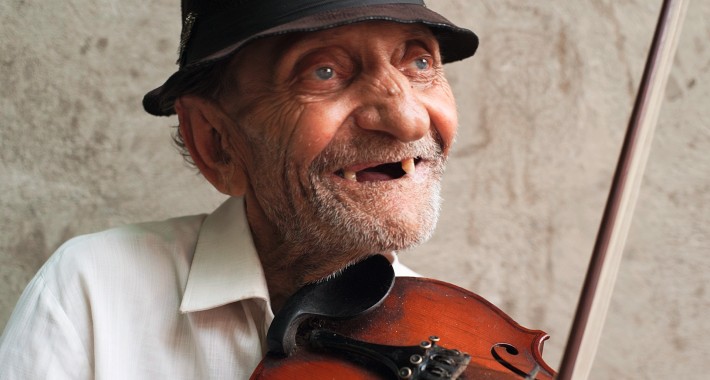Experiencing Belt and Road Film Week

This year marks the 10th anniversary of the Belt and Road Initiative and also the 5th anniversary of the Shanghai International Film Festival’s Belt and Road Film Week. Five years ago, I was honored to be invited as a film picker for this segment, tasked with reviewing each of approximately 20 films that made it to the final selection.
Having been engaged in the Shanghai International Film Festival’s selection process for over two decades, I’ve found that compared to the festival’s main competition sections such as the Golden Goblet Awards and the Asian New Talent Award, the selection criteria for the Belt and Road Film Week are notably more demanding. These heightened standards are due to the geographical diversity of the countries involved in the Belt and Road Initiative, which span from Central Asia to the Middle East, Southern Europe, and Central and Eastern Europe and reach from Southeast Asia to South Asia, Africa, and South America. The vast geographical scope naturally results in an unparalleled tapestry of cultures, encompassing a rich variety of ethnic groups, religions, languages, customs, and lifestyles. The cultural contexts of many films related to the Belt and Road often reach well beyond my existing knowledge, presenting a significant challenge to a judge’s overall cultural literacy, film expertise, international political and economic knowledge, and even foreign language proficiency.

A still from the Laotian movie Goodbye Mister Wong (2020).
In most cases, the selection process for this section tends to be rather slow because of a frequent need to pause and consult reference materials along the way in order to fully grasp the characters and events within the storyline. In 2023, a documentary-style co-production by Austria and other countries tells the story of a wedding photographer’s quest across Eastern European nations to uncover the vanishing ancient Jewish music known as Klezmer. The film’s locations span Ukraine, Romania, Serbia, and various other countries, featuring a range of local dialects alongside Hebrew and Yiddish languages. Through this journey of discovery, the film aims to shed light on the current status of ancient Jewish communities in Eastern Europe and explore how they construct cultural and ethnic identity through traditional music. While watching this film, I found myself pausing it almost every few minutes because there were numerous unfamiliar terms in the English subtitles, necessitating frequent dictionary references to ensure a thorough comprehension of the plot and themes.
I was deeply impressed by a Laotian film titled Goodbye Mister Wong, which I watched in 2021. It was my first time experiencing Laotian cinema, and fortunately, the storyline was easy to follow. The film revolves around a village in Laos where the land is slated for purchase by developers for the construction of a factory. The villagers find themselves caught between a desire for modernization and reluctance to let go of their traditional way of life. Chinese cinema in the 1980s often explored similar themes, so despite the different cultural backgrounds, we can still find things that resonate like experiencing modernization.

A still from The Klezmer Project (2023), a film jointly produced by Austria and Argentina.
When Iranian cinema is mentioned, names like Abbas Kiarostami, Jafar Panahi, and Asghar Farhadi, among other art-house film masters, usually come to mind. However, the Iranian film Butterfly Swimming, which I watched in 2020, is an intriguing suspense film with a shade of Hollywood-style storytelling. It excels at creating a suspenseful atmosphere, controlling narrative pacing, utilizing visual and auditory elements, and portraying the characters at a world-class standard.
When watching a movie in a theater, most audiences approach it with an expectation to encounter the familiar, like going on a date with characters and stories they already know. Even with new releases, there’s often a sense of encountering “familiar strangers.” However, watching films from the Belt and Road Film Week involves far more cultural exploration. If describing the extent of human knowledge as a circle, the inside of the circle represents the known world, while the outside is the vast expanse of the unknown space. Watching films from the Belt and Road region feels like continuously expanding the boundaries of this circle of knowledge, enabling me to venture into the unknown.

The author is a vice chairman of Shanghai Film Association, a professor at Shanghai Theater Academy, and a renowned movie critic and expert.
Over the past five years of working with the Belt and Road Film Week, I feel it has grown into the most unique, dazzling, and dynamic section within the Shanghai International Film Festival. Showcasing the cinematic cultures of the Global South, as the Belt and Road Film Week does, is a rare sight at other international film festivals. And the countries and regions participating in the Belt and Road Film Week are eager to showcase their realities and cultural achievements on this international platform. Therefore, the Belt and Road Film Week facilitates cultural dialogue between the Belt and Road region and world cinema.
I sincerely hope that the Shanghai International Film Festival will elevate the Belt and Road Film Week to a permanent competition section and places its three awards alongside the festival’s permanent awards, the Golden Goblet Award and the Asian New Talent Award. This can further amplify and highlight the distinctive characteristics and strength of the Shanghai International Film Festival, making it stand out from its peers globally.